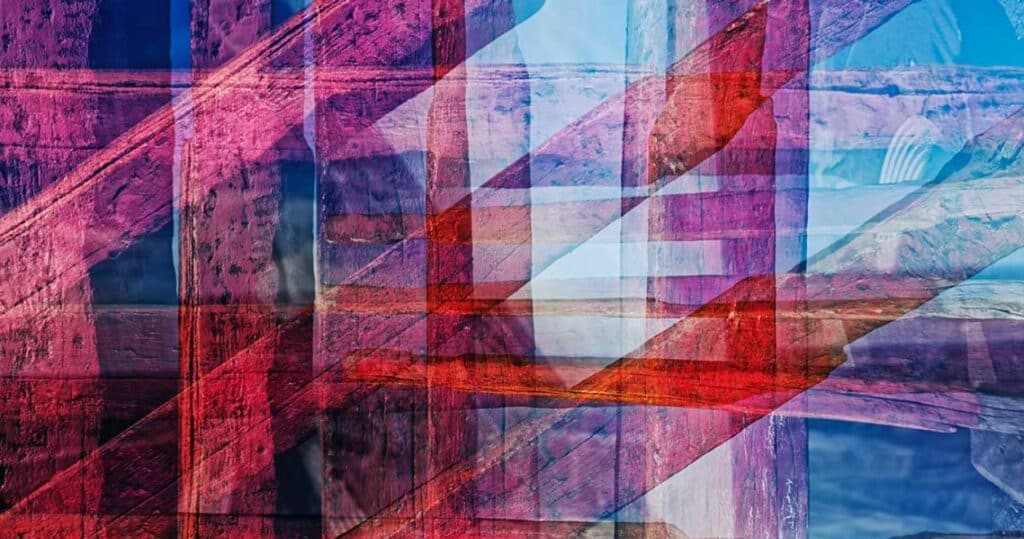Explore modern art, where cultural identity dominates. Ten Contemporary Artists are defying limits and redefining perspectives in this bright landscape. Their works explore cultural identity in depth, providing new viewpoints and inspiring important conversation.
Dedicated art curators develop this dynamic landscape alongside artists. These hidden professionals painstakingly search for exceptional pieces, create thought-provoking shows, and promote the art world. Artists and curators promote creativity to bridge cultures and foster understanding. With passion and vision, they invite us to explore the human experience, reflect, connect, and celebrate our many identities.
List of 10 Famous Contemporary Artists Who Explores Cultural Identity
Artists boldly explore national identity in contemporary art. In a globalised society, these ten brave artists have challenged prejudices and preconceptions. They explore the complex relationship between heritage, tradition, and modernity in their unique works, revealing the evolution of identity in our globalised society.
Yinka Shonibare

Key Features
- Dutch wax fabric, intricate sculptures, and installations
- “Nelson’s Ship in a Bottle,” “The American Library”
Contemporary Artist Yinka Shonibare experiments with colonialism and post-colonialism. His UK-born, Nigeria-raised work challenges cultural authenticity. His elaborate sculptures and installations typically incorporate Dutch wax fabric, which is associated with African identity. Shonibare challenges cultural identity and the intricate relationship between colonial legacies and global realities by using this material.
In a world moulded by millennia of cultural exchange and migration, his art challenges ideas of heritage and belonging. Shonibare explores cultural hybridity and modern identity through Dutch wax cloth. His work illuminates colonialism’s lasting effects and the continuous struggle for cultural autonomy and self-expression.
Ai Weiwei

Key Features
- Critiquing cultural and political freedom
- “Sunflower Seeds,” “Forever Bicycles”
Chinese artist and activist Ai Weiwei explores freedom in culture and politics via his different Contemporary artworks. His multidisciplinary works challenge social norms and promote social change. Ai Weiwei’s art illuminates human rights and free speech, provoking vital discussions.
His work raises awareness of censorship and the value of free speech worldwide. Ai Weiwei fearlessly addresses these issues, inspiring others to question power and work for equality. His art inspires viewers to fight for their rights and hold power accountable. Using art and activism, Ai Weiwei continues to change the world and promote conversation for a better future.
Mickalene Thomas

Key Features
- Rhinestones, acrylic, enamel, portraits
- “Portrait of Mnonja,” “Le Dejeuner sur l’herbe”
US-based African American artist Mickalene Thomas showcases the beauty and resilience of black women in her vivid Contemporary artworks. Her rhinestone, acrylic, and enamel sculptures are stunning and thought-provoking. Her striking designs defy beauty and femininity norms, showcasing black variety.
Thomas’s work expresses her experiences and the necessity of representation in modern art. She highlights underrepresented women of colour in popular narratives by painting them vividly and optimistically. Thomas’ art celebrates black women’s strength and uniqueness, promoting inclusivity and understanding in the art industry and beyond.
Doris Salcedo

Key Features
- Addressing political and social violence
- Highlighting cultural trauma and resilience
Let’s talk about Doris Salcedo, a cool Contemporary artist! We think about sad things like how politics and society can hurt people when she makes big, beautiful art. Some groups of people keep going even when things are hard, as shown in her art. It’s funny how she can use everyday things like chairs and tables to talk about sad things and how strong people are.
People who have been through hard times but are still brave and strong are shown in her art. We can see how sad people can be and still keep going. Her art shows us people who don’t always get heard and makes us feel and think about how other people feel.
Kara Walker

Key Features
- Examining race, gender, power dynamics
- Silhouetted installations, historical narratives
My name is Kara Walker and I’m a cool artist! I use shapes called shadows to make beautiful art. Shades of these forms, but they tell stories. People treat each other differently because of their skin colour or whether they are a boy or a girl.
They treat each other differently because of these things. People who see my art think about the past and how it still affects us now. It’s sad sometimes, but it helps us get along better. My art is so popular that museums and venues show it.
Shilpa Gupta

Key Features
- Investigating censorship, security, and surveillance
- Prompting reflection on globalization and technology
It’s me, Shilpa Gupta. I’m an artist from India. It’s important to me to make art about things like control, safety, and the fact that we’re always being watched. People should think about how technology and other things from around the world change us and our rights. My art makes you think.
I show my thoughts sometimes with cool things like pictures or videos. You have to figure it out like a game! Take your time and think about what my art means to you when you see it. Let’s talk about it! Let’s use art to learn about the world!
Kehinde Wiley

Key Features
- Redefining representations of power and prestige
- Elaborate portraits, classical European art elements
I’m going to talk about an artist named Kehinde Wiley! He’s from the US and his pictures of people are really cool. But these aren’t any old pictures. They’re unique because they strongly show African Americans today. He wants us to think about how we remember and honour important people in our past and culture.
He adds new ideas to old European art styles to make his pictures stand out. His words sound like, “Hey, everyone can be strong and amazing, no matter where they come from!” This makes us happy and gives us ideas when we look at his art. His art makes us feel like he’s giving us a big hug!
Shirin Neshat

Key Features
- Providing nuanced perspectives on the Middle Eastern experience
- Exploring gender, politics, and cultural identity
I am going to talk about Shirin Neshat! She is an Iranian artist. Picture and video clips that tell stories are what she does. But those aren’t just any stories! They’re about who we are, what’s going on in the world, and boys and girls. She wants to know what people think about customs, new things,
How they feel about everything. She makes us think about big things like politics and art every once in a while. We can see how big and full of interesting ideas the world is through her art. It’s like seeing another world through a magic window! We can talk about how the things we see make us feel. Shirin Neshat helps us learn more about other people and ourselves.
Toyin Ojih Odutola

Key Features
- Challenging notions of race and representation
- Pen and ink drawings, narrative-driven portraits
She is an artist from Nigeria and the United States. She uses pens and paints to make pictures. The pictures she makes are very bright and tell stories. She likes to talk about how people of different races are shown. Her pictures show how important it is for everyone to have their own story and culture.
They help us learn more about each other. We can picture different events and emotions when we look at her shots. It’s like looking at a picture book! Toyin wants us to understand that everyone’s life events are unique and make them who they are. We can meet with people from around the world through her art!
Wangechi Mutu

Key Features
- Addressing gender, race, and environmental issues
- Prompting conversations on cultural intersectionality and environmentalism
It’s cool art by a person named Wangechi Mutu! Wonderful things she creates from various materials, including paper, fabric, and more! Although Wangechi is from Kenya, he lives in the United States. We can learn about boys and girls, people of different skin tones, and how we treat nature through her art.
The way we treat other people, boys and girls, and even the Earth makes us think about her art. Putting tasty things together to make a new tasty meal! The art of Wangechi is like putting Africa and America together. What a cool idea, right? Allow us to make some art too!
Read More: 9 Best High Speed Photography Tips
Verdict
As our trip comes to an end, let’s remember how great art is. Through it, we can talk about things that matter to us and even change the way we think. We can find out more about ourselves and our friends by liking the cool art of these ten great artists. This is cool art. If you want to see more and talk about it, tell your friends on X (Twitter) and Facebook. Let’s cheer for all the different ways people show who they are through art. #WhoWeAre #CoolArt
FAQs
How do modern artists investigate cultural identity?
These days, artists like to look into many ways to find out who we are and where we come from. To do this, they paint, sculpt, and even use movies. They want to learn more about our background and customs.
Why is cultural identity inquiry significant in contemporary art?
Artists who study national identity help us see how different and unique each of us is. They help us understand our past and why we see things the way we do.
Why is cultural identity exploration so important in modern art?
We can learn to value people from around the world by looking at art. It helps us learn to accept and value each other’s differences. We can learn about other people and enjoy how unique we all are when we look at art.





